Compare DisplayPort and HDMI by resolution, refresh rates, multi-monitors, audio capabilities, and more. Find out which cable is the best one to use in gaming, streaming, and work.
Introduction
Don’t know what cable to use on your new monitor or system? You’re not alone. DisplayPort vs HDMI can be confusing with all the available display connection options in the market. Where HDMI has become the standard of choice when it comes to televisions, game consoles, and home entertainment, DisplayPort has found its place in the PC gaming and professional workspace market.
The technologies have changed a lot throughout the years, and newer versions have amazing features that can do simple office tasks up to high-end 4K gaming. After reading this guide, you will be in a good place to understand when you need DisplayPort over HDMI and the opposite, as well as when you are assembling a gaming computer, when you are configuring a multi-monitor workspace, and when you are designing the home theater of your dreams.
Quick Comparison Snapshot
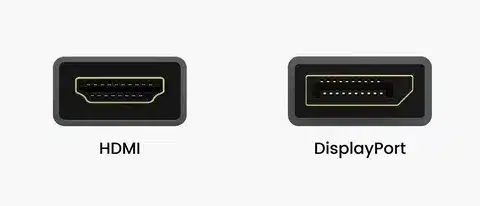
Before getting down to the details, here is a comparison of the fundamental differences between DisplayPort and HDMI on a side-by-side basis:
Bandwidth & Resolution: DisplayPort typically provides more bandwidth and refresh rates, which makes it the best DisplayPort to use with high-performance gaming monitors and professional displays.
Multi-Monitor Support: DisplayPort is superior to other interfaces in daisy-chaining using MST (Multi-Stream Transport): you can daisy-chain multiple monitors off of a single port.
Audio Return & Remote Control: HDMI supports ARC (Audio Return Channel) and CEC (Consumer Electronics Control), which is ideal in the home theater environment.
Locking Mechanism: DisplayPort connectors have a secure latch system, and HDMI makes use of a friction fit.
Device Prevalence: HDMI is effectively a universal connection on television and game consoles, and DisplayPort on graphics cards of PCs and professional monitors.
When to Choose DisplayPort
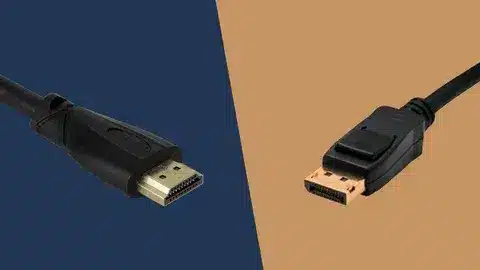
High-Performance Gaming
DisplayPort can usually be the best gaming monitor cable connection to use when you take your gaming seriously. DisplayPort has always had more bandwidth capacity, and that translates to a higher possible refresh rate at full resolution. This is especially important in competitive gaming, where a single frame counts.
The recent DisplayPort 2.0 standard takes the limits even further with uncompressed 4K 240Hz or 8K 85Hz. DisplayPort allows gamers with high-end graphics cards and monitors that can support a refresh rate of 144Hz or higher, as well as 165Hz or higher, or 240Hz or higher, to realize the maximum performance of their systems.
Multi-Monitor Productivity
DisplayPort Multi-Stream Transport (MST) technology is a breakthrough among professionals and amateurs operating multi-monitor configurations. The above feature enables you to daisy-chain more than one display to one DisplayPort output on your graphics card, which saves the amount of cable clutter and also makes it much easier to set up your workspace.
DisplayPort gives everyone, be it a trader following numerous market feeds, a designer with a large canvas, or a developer with a large code window, the freedom to increase their screen space without slowing down performance.
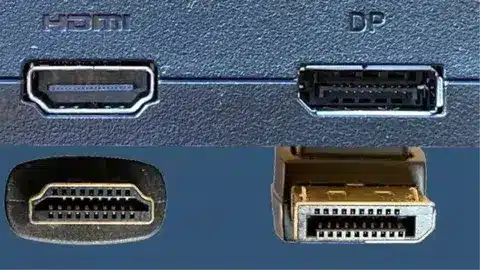
Adaptive Sync Technologies
DisplayPort supports adaptive sync technologies such as AMD FreeSync and NVIDIA G-Sync. These will remove tearing and shorten response time by matching the frequency of your monitor with the frequency of your graphics card, and lead to a much more enjoyable game, with controls that respond quicker to your commands.
Professional and Secure Environments
DisplayPort locking latch connection is a safer method of connection compared to the HDMI frictional design. This would qualify DisplayPort as the choice in a professional setting, trade show, or any other place where unintentional disconnection may be an issue.
When HDMI Is the Better Option
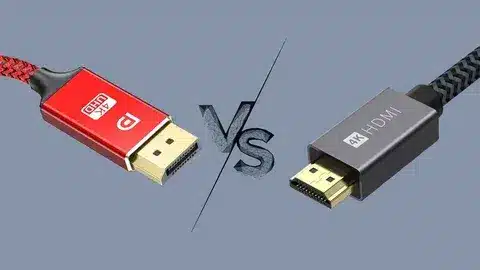
Home Theater and Entertainment Systems
HDMI works best in the home theater. Its Audio Return Channel (ARC) and improved Audio Return Channel (eARC) means your TV can send audio to your soundbar or AV receiver on the same cable that video is transmitted via. This removes the use of other audio cables and makes the installation simpler and sleeker.
Another HDMI benefit is known as Consumer Electronics Control (CEC), which allows you to operate many gadgets using the same remote. Plug your gaming console in, and the TV turns to the right input. Your soundbar is then controlled by the volume button on your TV remote. The HDMI is the logical choice of living-room entertainment due to these conveniences.
Universal Device Compatibility
HDMI ports are found on almost all modern televisions, game consoles, streaming devices, and laptops. This commonality makes HDMI the most interoperable option when linking equipment between different makers. HDMI supports connectivity across the board, whether you are connecting a PlayStation 5, Nintendo Switch, Apple TV, or any other consumer device.
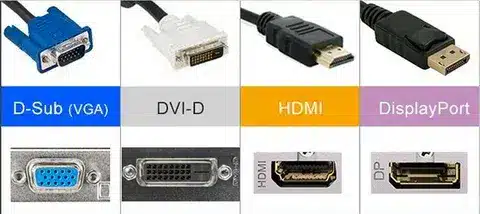
Latest HDMI 2.1 Capabilities
The latest HDMI 2.1 standard has reduced the performance gap with DisplayPort by a large margin. Comparison HDMI 2.1 vs DP HDMI is now capable of supporting 4K 120Hz, 8K 60Hz, and even the variable refresh rate (VRR) technology used in gaming. Gamers with PlayStation 5 or Xbox Series X have HDMI 2.1, which opens the capabilities of these systems.
Use Case Quick Reference
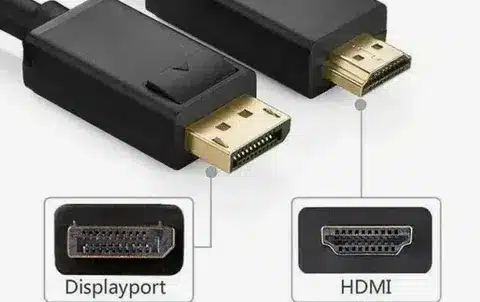
The following is a handy table of contents that can assist you in selecting the most suitable cable to use in multi-monitor (and other) setup cases:
Gaming PC with high refresh rate monitors: DisplayPort to be as fast as it can and eventually be.
Multi-monitor productivity workspace: DisplayPort with MST to daisy-chain DisplayPorts.
Connecting a gaming console to a TV: HDMI, the universality, and gaming capabilities.
Home theater system with audio-oriented: HDMI ARC/eARC audio control.
Professional display or locking installation: DisplayPort with locking connectors is reliable.
Mixed device entertainment center: HDMI to support the widest possible devices.
Emerging Standards to Watch
The landscape of display connectivity is constantly changing at a breakneck pace, and both DisplayPort and HDMI are stretching their limits.
DisplayPort 2.0 and 2.1 are huge advances in bandwidth. The newer standards have much greater data throughput, allowing uncompressed 4K at 240Hz or 8K at 85Hz without any quality loss. With the development of monitor technology, DisplayPort 2.0 is now in a good place to support ultra-high-resolution displays in the future.
HDMI 2.2 and beyond should be further enhanced in resolution support, refresh rate, and may also include new connector designs. The HDMI Forum is constantly innovating, making HDMI relevant to next-generation entertainment devices.
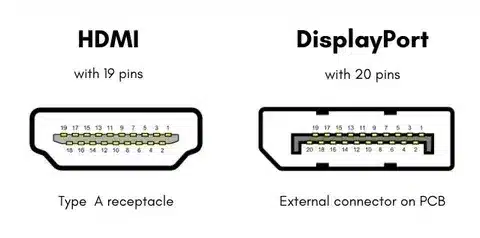
Display Stream Compression (DSC) technology should be mentioned separately because it enables both standards to reach ultra-high resolutions and refresh rates with a comparably small loss in perceptible quality. The 8K gaming and professional workflows are brought closer to more people without the need to install a completely new cable infrastructure with this compression technology.
Conclusion
When DisplayPort vs HDMI are concerned, it all depends on the application and priorities that you have. DisplayPort is the best option to use when your performance can be improved to the maximum, you intend to have more than one monitor, or when you need to have the safest connection when using it in a business application. It is excellent to support PC setups and for use in gaming setups due to its superior bandwidth, MST capabilities, and strong connector design.
Use HDMI when universal compatibility, audio return functions, and control of the device are important. It is the natural choice when it comes to entertainment-oriented setups, due to its extensive use, home theater integration capabilities, and console gaming features.
The positive is that most of the current devices are compatible with both standards, which leaves you with a choice of how to set up your devices. DisplayPort and HDMI are both now in development to support the requirements of the new ultra-high-resolution, high-refresh-rate displays of tomorrow.





